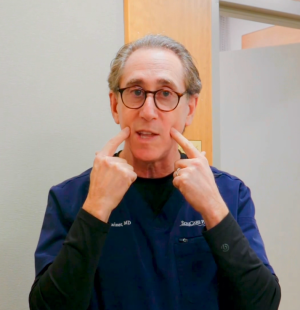- Home
- Blog
- Cosmetic Injections
- Cosmetic Safety Alert: Three Anatomy Questions to Ask Your Injector
Cosmetic Safety Alert: Three Anatomy Questions to Ask Your Injector
 If you’re thinking about having cosmetic injections, such as Botox or fillers, safety should be at the top of your mind when deciding where to have these treatments performed. Unfortunately, there has been a proliferation of inadequately trained injectors in recent years, which has led to a rise in serious complications. Those of us who have been practicing cosmetic dermatology for decades are alarmed by this trend, and continue to seek ways to educate the public to improve safety.
If you’re thinking about having cosmetic injections, such as Botox or fillers, safety should be at the top of your mind when deciding where to have these treatments performed. Unfortunately, there has been a proliferation of inadequately trained injectors in recent years, which has led to a rise in serious complications. Those of us who have been practicing cosmetic dermatology for decades are alarmed by this trend, and continue to seek ways to educate the public to improve safety.
While the obvious first steps might appear to be having treatments performed by board-certified physicians in specialties such as dermatology and plastic surgery, there are other more specific and detailed ways to ensure the safety of your injections. Specifically, it is essential that your injector possess a detailed knowledge of anatomy of the face, including arteries, muscles, and nerves. Fortunately, there are three questions you can ask to ensure that your injector has the knowledge of anatomy necessary to provide you with the safest outcomes possible. If they cannot specifically answer all these questions, it should raise alarm bells as to the ability of the injector to provide you with safe treatment.
Question #1
In what part of the lip are both the upper and lower labial arteries located?
Answer: for both the upper and lower lip, the labial artery is located in the posterior aspect of the mucosa (the moist, protective membrane inside your mouth and nose). This knowledge, specifically the posterior location of the artery, is essential so that your injector can avoid piercing the artery, which can cause catastrophic consequences including necrosis (skin death).
Question #2
What is the anatomic course of the angular artery on the face?
Answer: the angular artery is a branch of the facial artery, which begins approximately at the corner of the mouth. Importantly, the angular artery can take one of several different paths as it navigates its way toward the inner corner of your eye. Failure to understand the location and depth of the angular artery can result in injection of the artery, which can lead to skin necrosis as well as vision loss.
Question #3
Where is the location of both the supratrochlear and supraorbital foramen?
Note: foramen are holes in a bone for the passage of vessels and/or nerves
Answer: both of these foramen are located in the bone above the eyebrow, with the supratrochlear foramen above the inner portion of the eye, and the supraorbital foramen in the mid portion of the eye in line with the pupil. These are important anatomic landmarks, which must be avoided in order to prevent a serious complication from botulinum toxin injections called “eyelid ptosis (drooping)”.
If your injector can accurately answer all three of these questions, then they probably have sufficient training to perform safe injections for you. It doesn’t guarantee optimal cosmetic results, but should afford you some measure of comfort as to safety. If your injector cannot accurately answer all three of these questions, then it may warrant reconsideration of where you have your treatments performed. A quality injector will have taken the time to learn the details of facial anatomy, and should be very comfortable providing you with answers to these questions.
At SkinCare Physicians, we have pioneered many of the injection techniques that other physicians use throughout the country. We have also educated dozens of young physicians, training them in the skills and detailed knowledge of anatomy necessary to be both effective and safe injectors. Through these education efforts, we have helped to create a broad network of skilled injectors that provide safe and effective treatments for thousands of patients every year.



What is the most effective tx for wrinkles on the upper lip
Wrinkles on the upper lip can be challenging to treat, but thankfully there are some good options. The most common ones we use would include microneedling with topical Sculptra, ablative laser resurfacing, and injectable fillers. Each of these has its unique benefits and limitations, many of which are determined by an individual’s unique anatomy. Unfortunately there isn’t a one size fits all approach, and your dermatologist can help determine which strategy might be best for you.